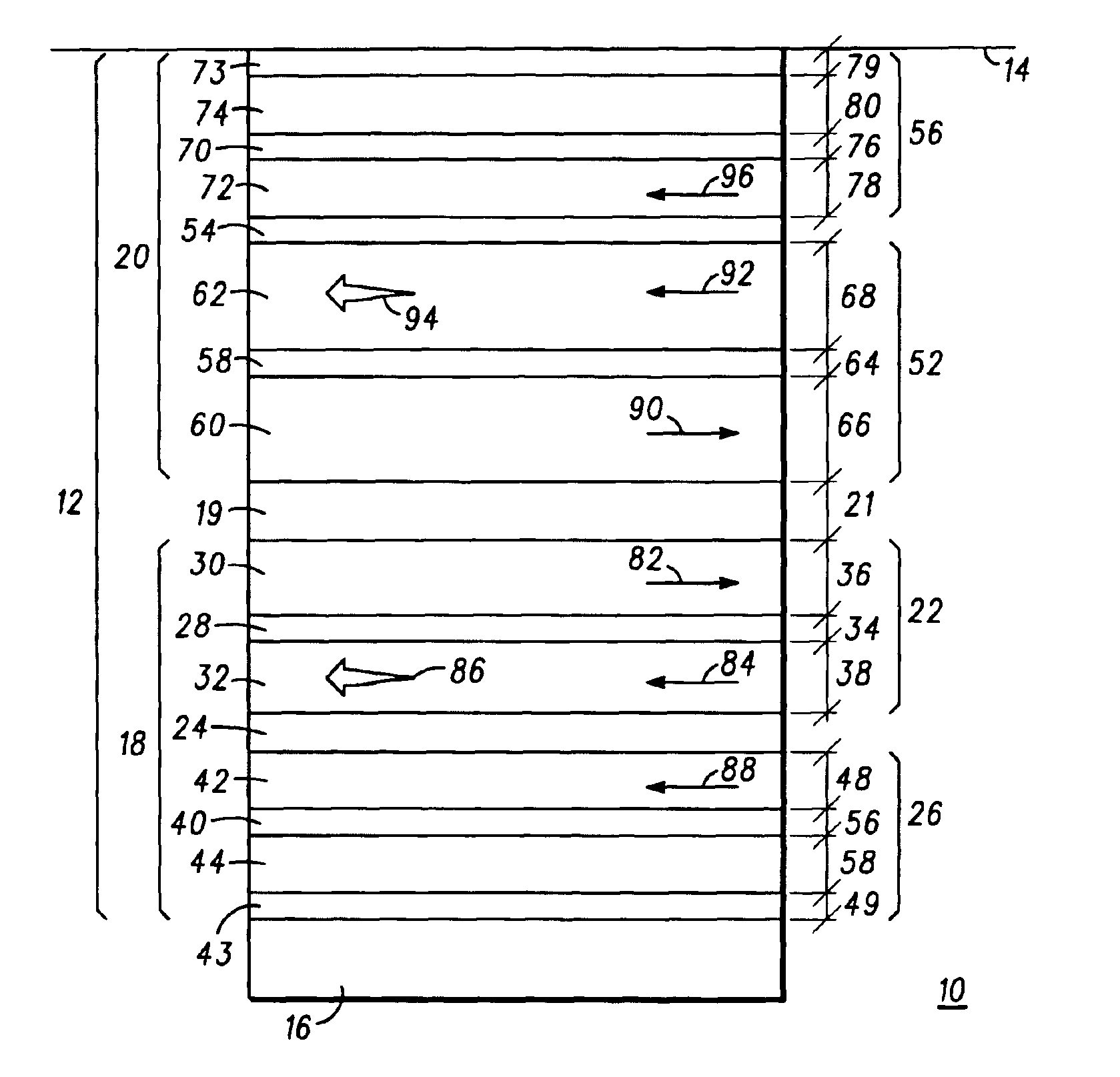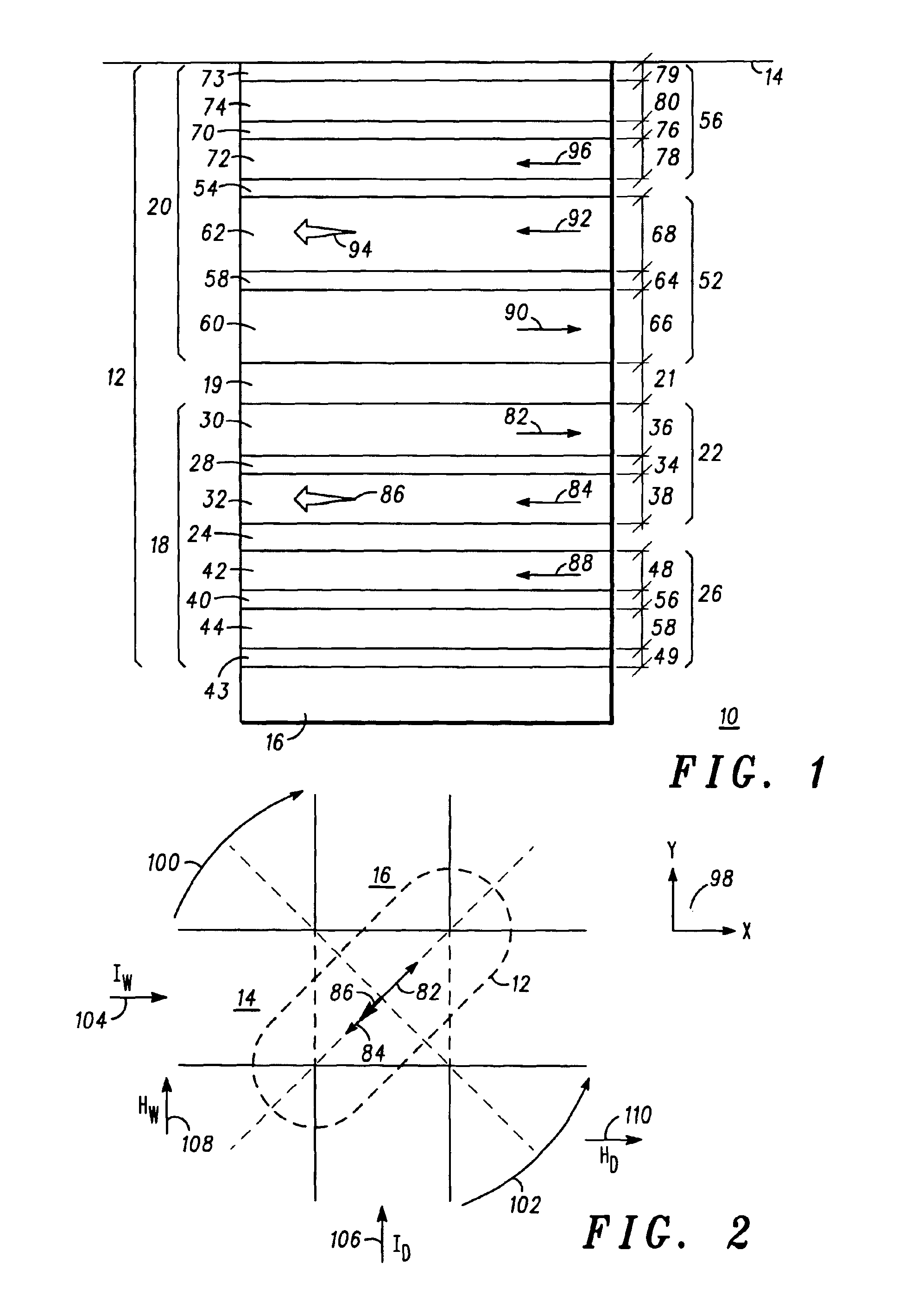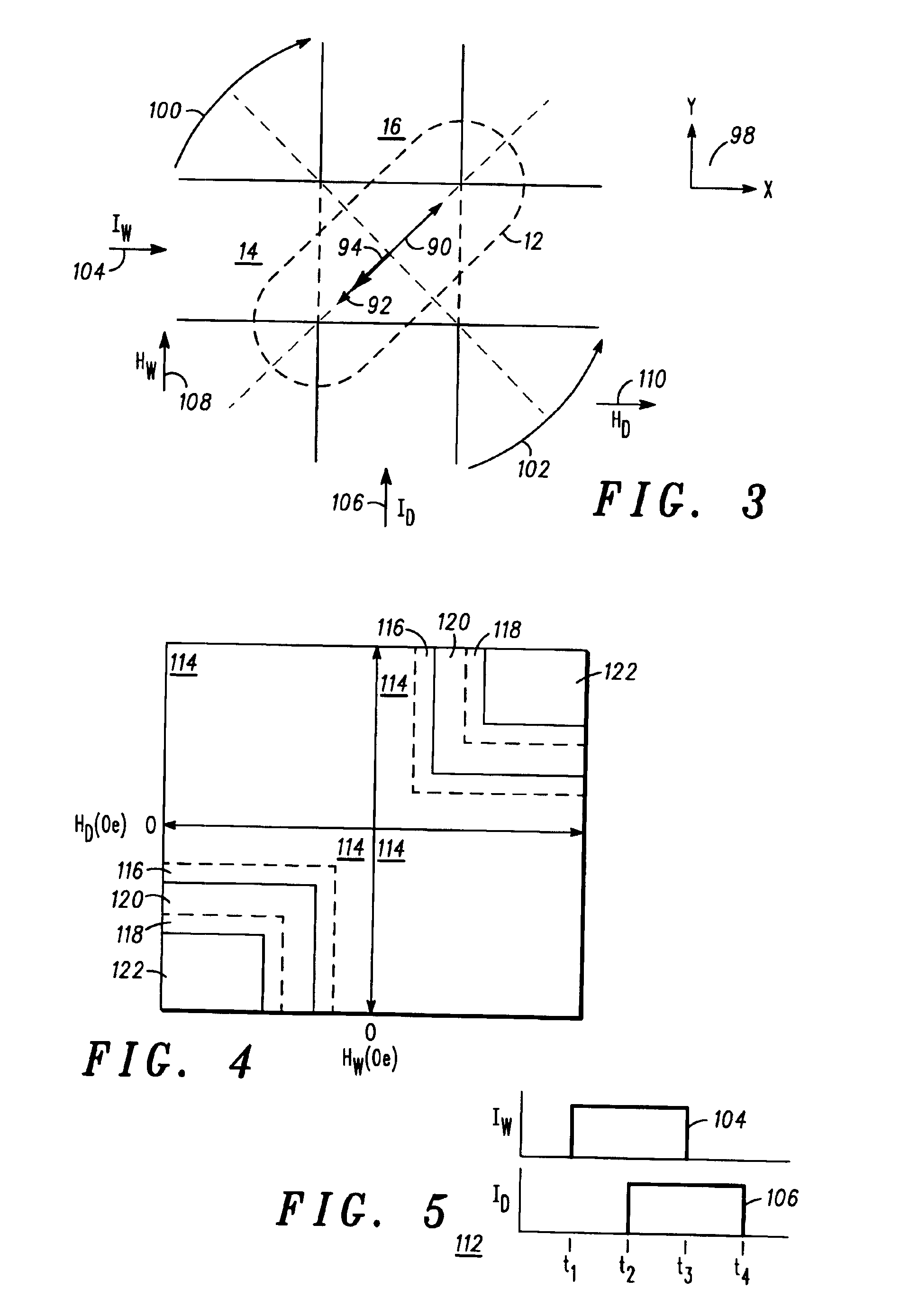Method of writing to a multi-state magnetic random access memory cell
a multi-state, memory cell technology, applied in the direction of digital storage, instruments, semiconductor devices, etc., can solve the problems of poor write endurance of flash memory, high voltage requirements, slow program and erase times, etc., and achieve the effect of reducing the number of cycles of flash memory
- Summary
- Abstract
- Description
- Claims
- Application Information
AI Technical Summary
Problems solved by technology
Method used
Image
Examples
first embodiment
[0034]As previously mentioned, bit 20 functions similarly to bit 18; however in this first embodiment as described, the tunnel barriers 24 and 54 are deposited with different thicknesses, giving a different resistance range for each bit 18 and 20, such as 2K and 4K ohms with MR of 50%. For example, MR=□R / Rlow=(Rhigh−Rlow) / Rlow. For 2 bits, 4 separate resistance states may be determined as shown in the chart below.
[0035]
BIT 2 (0)BIT 2 (1)BIT 1 (0)R1low + R2lowR1high + R2lowBIT 1 (1)R1low + R2highR1high + R2high
[0036]Magnetic regions 22 and 52 are thus designed to provide a higher switching field either through the magnetic layer thickness, material anisotropy, or antiferromagnetic exchange strength. Bit 18 has a lower toggle field and can be switched when the applied field is above its threshold. Bit 20 has a higher switching threshold. In the field range above the bit 18 threshold and below the bit 20 threshold, bit 18 can be toggled without disturbing bit 20. For fields above the b...
second embodiment
[0051]There are seven regions of operation illustrated in FIG. 7 for the second embodiment which includes both a direct and a toggle mode. In a region 114 there is no switching, e.g., there is not sufficient current in either the word line 14 or digit line 16 to create a strong enough magnetic field to “write” the bits 18 and 20. For MRAM operation in a regions 130 and 134, the direct writing method is in effect for writing bit 18 (region 130) and bit 20 (region 134). When using the direct writing method, there is no need to determine the initial state of the MRAM device because the state is only switched if the state being written is different from the state that is stored. The selection of the written state is determined by the direction of current in both word line 14 and digit line 16. For example, if a ‘1’ is desired to be written, then the direction of current in all the lines will be positive. If a ‘1’ is already stored in the element and a ‘1’ is being written, then the fina...
third embodiment
[0060]There are five regions of operation illustrated in FIG. 9 for the third embodiment which includes both a direct and a toggle mode. In a region 114 there is no switching, e.g., there is not sufficient current in either the word line 14 or digit line 16 to create a strong enough magnetic field to “write” the bits 18 and 20. For MRAM operation in a region 130 and 134, the direct writing method is in effect for writing bit 18, and bits 18 and 20, respectively. When using the direct writing method, there is no need to determine the initial state of the MRAM device because the state is only switched if the state being written is different from the state that is stored. The selection of the written state is determined by the direction of current in both word line 14 and digit line 16. For example, if a ‘1’ is desired to be written, then the direction of current in all the lines will be positive. If a ‘1’ is already stored in the element and a ‘1’ is being written, then the final stat...
PUM
 Login to View More
Login to View More Abstract
Description
Claims
Application Information
 Login to View More
Login to View More - R&D
- Intellectual Property
- Life Sciences
- Materials
- Tech Scout
- Unparalleled Data Quality
- Higher Quality Content
- 60% Fewer Hallucinations
Browse by: Latest US Patents, China's latest patents, Technical Efficacy Thesaurus, Application Domain, Technology Topic, Popular Technical Reports.
© 2025 PatSnap. All rights reserved.Legal|Privacy policy|Modern Slavery Act Transparency Statement|Sitemap|About US| Contact US: help@patsnap.com



